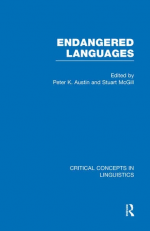Tab Article
At least half of the seven thousand or so languages spoken today are in danger of disappearing during the 21st century. Although languages have always come and gone, the current rate of language extinction is unprecedented, a loss which not only affects individual communities but also diminishes the world's linguistic heritage. This crisis has stimulated a variety of responses from linguists: sociolinguists have been concerned with the study of language revitalisation - how the tendency to shift away from minority languages can be reversed - while general linguists have paid more attention to the structural aspects of language endangerment - how languages change as they fall into disuse. In recent years linguists have been particularly concerned with language documentation - the activity of recording, annotating, translating and archiving audiovisual materials of languages before they are lost. In addition, all linguists working on endangered languages face the ethical question of how much effort they should devote to non-academic activities in support of the communities with whom they work.
The study of language endangerment has only really become a concern of mainstream linguistics in the past twenty years, and this four-volume collection is the first of its kind, bringing together research on language endangerment from leading scholars. Theoretical and practical responses by linguists have led to the emergence of the linguistic sub-fields of language documentation and language revitalisation, and most of the publications within them date from just the last ten years. There has however been a veritable flood of books and articles during this time, and an enormous flowering of interest both within academia and in the wider community as well. Twenty years ago an extensive collection on this topic could not have been put together.
A general introduction by the editors gives an overview of the history of research on endangered languages and the main issues faced by scholars of language endangerment today, while specific volume introductions detail the research context for the individual articles. Endangered Languages is an essential one-stop work of reference and will be appreciated by researchers and students of language endangerment and related disciplines.


